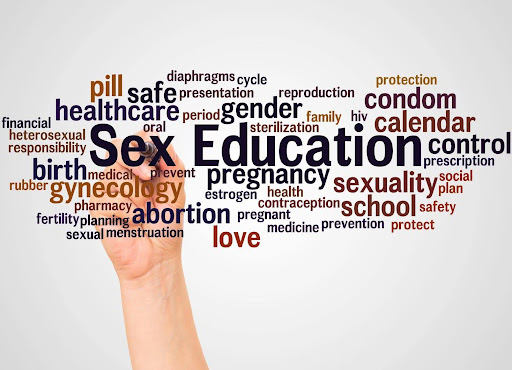In the last eight years, condom use among young people has fallen drastically, while sexually transmitted diseases are on the rise. The WHO denounces the urgency of sex education programmes, a fundamental weapon to combat the risks linked to risky practices, but in many countries, including Italy, these interventions are still insufficient.
The regional office for Europe of the World Health Organization (WHO) has recently published the study Health Behaviour in School-aged Children (HBSC), which addresses the sensitive issue of youth deviance, such as the excessive use of smartphones and social networks, gambling, sexual habits, addiction to psychotropic substances, bullying, etc.
To compile the report, more than 242,000 adolescents from 42 countries were interviewed between 2014 and 2022 and physiologically significant differences between geographical areas, genders and socio-economic groups are observed.
However, there is a very clear and extremely worrying trend: in the last eight years, the percentage of European adolescents having unprotected sex has increased dramatically.
Condoms are taboo again
Between 2014 and 2022, the number of sexually active adolescents who said they had used a condom during their last sexual intercourse fell from 70% to 61% among boys and from 63% to 57% among girls.
This historical reversal is compounded by other alarming phenomena such as the use of coitus interruptus (practised by 60% of young people), the use of emergency contraception (adopted by more than 10% of 15-17 year olds) and the great confusion about sexually transmitted infections (20% of young people are unaware of these risks).
The reduction in protected sex corresponds fatally with the increase in sexually transmitted diseases such as HIV, viral hepatitis, papillomavirus, gonorrhoea, syphilis and chlamydia.
The spreading of venereal diseases in Italy
Between 1991 and 2021, the Italian surveillance system for sexually transmitted infections recorded a total of 151,384 new cases. Of the cases, 71.8% were diagnosed in men and 28.2% in women. The median age of the reported persons was 32 years: for women 30 years, for men 33 years.
Until 2004, the number of cases remained stable, with an annual average of about 4,000 reports. Since 2005, there has been a systematic increase (with peaks of 37%) in the number of cases. In the period of the Covid-19 pandemic, the number of cases decreased, but the numbers increased again.
Sex education: the only way out
The HBSC report underlines the urgent need for targeted sex education interventions to promote safer sexual practices among young people, providing them with the necessary foundation for the protection of mental and physical health and well-being.
‘While the report’s findings are discouraging, they are not surprising,’ said Dr Hans Henri P. Kluge, WHO/WHO Regional Director for Europe. ‘Age-appropriate sexuality education is neglected in many countries and is increasingly questioned on the false assumption that it encourages sexual behaviour. Today we are reaping the bitter fruits of these reactionary attitudes’.
For Dr András Költő, from the University of Galway, lead author of the report, ‘comprehensive sexuality education is the key to closing these gaps and empowering all young people to make informed decisions about sex at a particularly vulnerable time in their lives, as they move from adolescence into adulthood. But education must go beyond the provision of information. Young people need safe spaces to discuss issues such as consent, intimate relationships, gender identity and sexual orientation.
The report calls for adequate investment in sex education: implementation and funding of educational programmes that cover all the issues involved: contraception, venereal diseases, healthy relationships, gender equality, the fundamental issue of consent and the discussion of sexual orientation (lesbian, gay, bisexual, transgender, queer, questioning, intersex, asexual). In short: LGBTQIA+).
These sexual health courses, to be delivered both in and out of school, should be confidential, non-judgmental and easily accessible. They should encourage open and honest conversations, including within families, and work vigorously to reduce social stigma and raise awareness.
Italy and sexuality education
Unlike many other European countries, Italy does not yet have a law or national guidelines to ensure structured sexuality education programmes for young people. This is a regulatory vacuum that has ancient roots and is getting worse and worse, as evidenced by the current plans to dismantle public clinics and the reduction of investment in prevention and information campaigns.
According to Professor Piero Stettini, psychotherapist and clinical sexologist, vice-president of the Italian Federation of Scientific Sexology (FISS), the absence of structured sex education programmes in Italian schools is a concomitant cause of the progressive decline in the use of protective methods and the increasing recourse to practices such as coitus interruptus and the so-called morning-after pill. To address what Italian sexologists consider a real emergency, the ISSF and many other organisations support the comprehensive sex education programmes already recommended by WHO and UNESCO.
An in-depth programme on youth sexuality issues would have the potential to reduce the serious risks young people face by providing them with the information and tools they need to protect their health. At present, however, institutions seem unwilling to address the situation, leaving young people without adequate support to prevent risky behaviours that can have serious consequences for their health and future.



